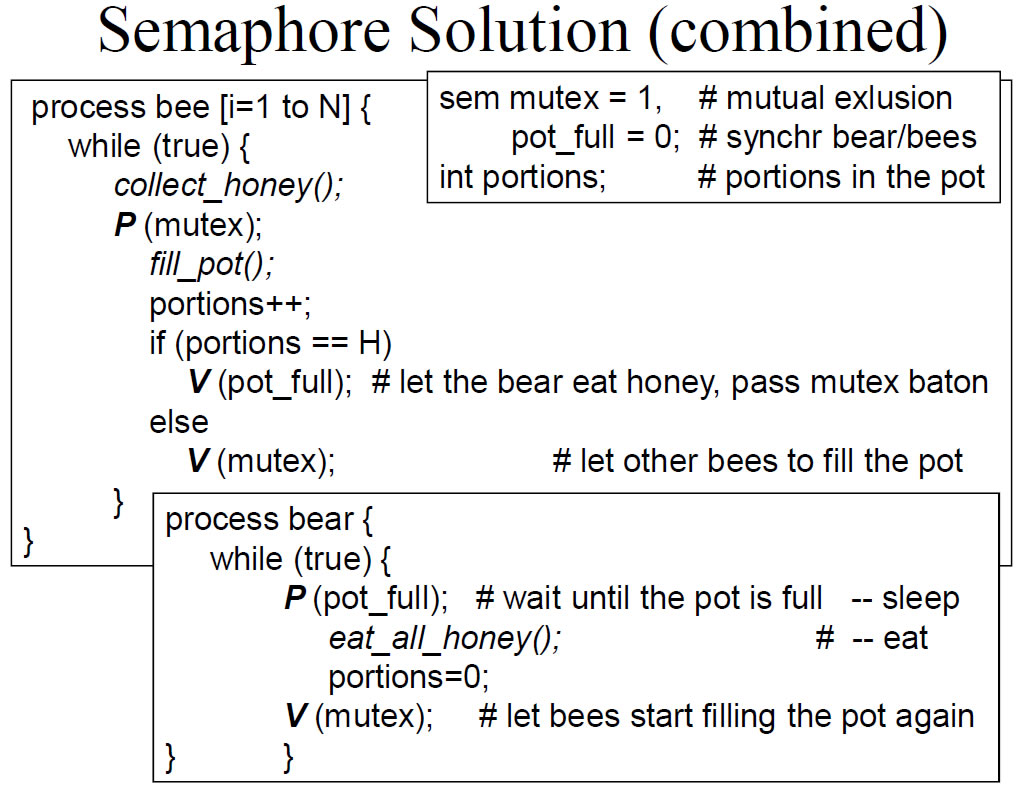A: X <- 7 B: some1 <- X C: Y <- 87 D: some4 <- X E: some5 <- YIn location A, the old values of variables Y and Z must not be visible once X has received a new value, and the new value of Z must the the sum of new values for X and Y. In location B, values for variables some1, some2 and some3 must be those of X, Y and Z at execution start time for this code sequence. In location E, variable value Y must be reset to zero immediately after reading its value.
Y <- 4 some2 <- Y Y <- 0
Z <- X+Y some3 <- Z
- Which of these (pseudo-)code sequences (A, B, C, D and E) must be protected as critical section and why? Who do the other sequences have no need for protection?
- Give a scenario leading to an erroneous situation, if the critical sections are not protected. Explain why the result is erroneous and what caused the error. Will the same error happen every execution time?
- Show (with pseudo-code), how critical sections in these threads are protected with busy-wait loops (e.g., with test-and-set instruction). In what type of environment would this be a reasonable solution? Why?
So, the thread pseudocode is roughly as follows:
for i=1 to nPhases <compute Phase i> Boom.PhaseDone(myId)Give the solution for this synchronization problem with monitor Boom. Monitor Boom has method PhaseDone, which each thread calls at the end of each execution phase. Explain why your solution is correct.
- Explain the concept private semaphore? When would you use one?
- What is the difference between semaphore wait() and monitor waitC() operations?
- How does Bankers algorithm differ from Dijkstra's DDA-algorithm?
What do they have in common?
Below is a rough semaphore solution.
- Modify the example below so that many bees (at most 50) can be filling up the pot concurrently.
- Modify the example below so that there are two bears which are woken up to eat in alternate turns.
